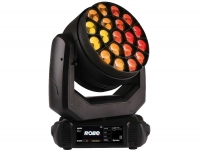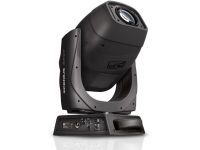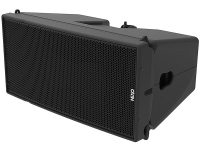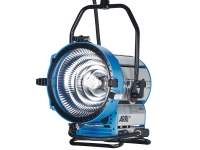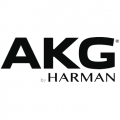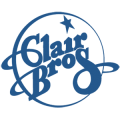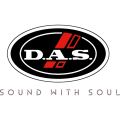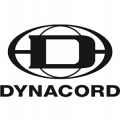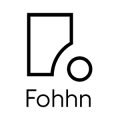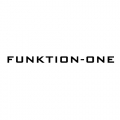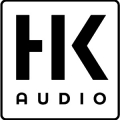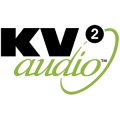ABOUT THE PRODUCT
ABOUT THE MANUFACTURER
GLOSSARY
PRO SERIES PRO9
Live Digital Console Control Centre with 88 Input Channels, 35 Mix Buses, 96 kHz Sample Rate and Touring Grade Road Case
The MIDAS PRO Series has become established as the industry standard on live concert tours and the road-proven PRO9 featuring 88 simultaneous input channels and 35 time-aligned and phase-coherent mix buses, shares the familiarity of a common user interface and workflow with PRO3 and PRO6. Like all PRO Series consoles, the PRO9 features managed latency and 40 bit floating point processing precision. PRO9 sets the standard of performance in high-profile live sound applications and is a truly impressive digital control surface for the engineer whose very livelihood depends on both unparalleled functionality and reliability.
HyperMAC and AES50 audio networking technologies allow the PRO9 to dynamically assign up to 288 inputs and 294 outputs at 96 kHz sampling rate to any of its input channels and bus outputs on a scene-by-scene basis. This high level of connectivity, coupled with the large channel and bus counts, makes the PRO9 equally at home in theatres and symphony halls as it is in live concert touring, outside broadcast and music festivals.
Digital Audio Networking
SuperMAC (AES50-Compliant) and HyperMAC digital audio networking technologies from KLARK TEKNIK simultaneously provide high channel counts, ultra low and deterministic latencies, sample-synchronous and phase-aligned networked clock distribution, error detection, network redundancy, and ease of deployment and use ? to meet the demanding requirements of live concert touring.
The PRO9 HyperMAC router provides a dual redundant snake connection to the DL371PRO9 Audio System Engine over optical fibre and copper with a bandwidth of 192 bidirectional channels of 96 kHz 24 bit digital audio, up to a distance of 500 m with optical fibre or 100 m with CAT5/5e cable.
PRO9 is compatible with all MIDAS PRO Series digital I/O units, as well as with any other 96 kHz-enabled AES50-equipped devices. Multiple PRO Series consoles can be connected together to create either larger mixing systems, or multiple discrete mixing consoles can share a common resource of networked and distributed I/O interfaces.
Touring Grade Road Case
Rugged and built to last, the PRO9 Touring Pack includes a PRO369-RC Road Case, constructed from rigid marine grade plywood and durable aluminium extrusions. Dual load-bearing spigots that couple the weight of the console chassis directly into the road case and composite density foam provide internal support and superior protection in transit, night after night, city after city.
Advanced Navigation Flexibility
At the heart of MIDAS console navigation are the VCA and POPulation groups, which mirror the natural work flow used by mix engineers and encourages the development of a mental picture, or ?Mind Map?, of the whole system. Only the required control elements and associated feedback are presented, allowing users to adopt structured task-based workflows, rather than being presented with an overwhelming ?sea of knobs?.
Integrated Effects Processors and Graphic Equalisers
The PRO9 can simultaneously process up to 8 internal multi-channel effects and DL371PRO9?s 40 bit floating-point audio processing hosts a wide choice of virtual effects devices, which range from dual-mono delay units, stereo modulation and numerous diverse reverberation simulations, multi-band compression, dynamic EQ and multi-channel dual-function dynamics processing. Up to 36 1/3 octave KLARK TEKNIK DN370 Graphic Equalisers (GEQs) are provided, which can be patched into any output.
PRO9 provides comprehensive automatic latency management of all internal routing and processing latency ? and also includes compensation for external analogue inserts. All audio samples are synchronised before summing, resulting in absolute phase coherence at the outputs, without the comb filtering effects of competing products that often result in specific frequencies being cancelled out completely.
All effects processors and GEQs are custom-designed to function within this automatic latency compensation system. This ensures a phase-coherent, sample-accurate mix regardless of whether the devices are used as channel inserts or on auxiliary buses.
Midas PRO Fader
Not satisfied with the existing motorised fader choices in the marketplace, MIDAS created the PRO FADER, rated for up to a million cycles three times that of other leading manufacturers - and providing high linearity, robustness, and smooth feel during operation. This decision yielded many other benefits, including total quality control over the manufacturing process and lower costs that could be passed on to customers.
As a digital console manufacturer, MIDAS has a perspective on the actual application of motor faders that a component manufacturer would not have. The multi-disciplinary development project combined mechanical design, electronic hardware and software optimisation with a rigorous testing programme and an investment in material science to produce the best possible performance in actual operation in MIDAS PRO Series consoles. Semi-precious metals are used for the wiper fingers for their hard-wearing properties, and precision resistive tracks were created that offered highly linear positional accuracy, coupled with long-term durability and even response in use.
Highest Quality Display Screens
The PRO9 Control Centre features dual 15" full colour daylight-viewable TFT displays for use in all environments, both inside and outdoors. The displays provide visual feedback for the entire system, the on-screen menus instantly navigate to the console overview page, which keeps all vital information (all metering, all fader positions, mutes and solos) in view at all times.
Digital Precision, Analogue Response
The oversampled digital signal processing algorithms, combined with the fully interpolated and touch sensitive user controls, result in the smooth continuous response and immediacy of working on an analogue console. Parameter adjustment becomes fast and easy, and the continuous phase shift of a swept frequency control is heard without the quantisation artefacts exhibited by competing digital consoles.
Wireless Remote Control
Delivering unprecedented control and mobility, the MIXTENDER App for iPad* combines control of key functions with the highly responsive system metering, allowing users to take control of PRO9 using an iPad from anywhere in a venue. Support for multiple simultaneous iPads allows FOH and monitor engineers to work collaboratively, enhancing productivity and communication as well as saving valuable time during set-up.
Redundancy - For Peace of Mind
The PRO9 has dual-redundant control computers, and three removable power supplies - only two of which are required for operation. The power supplies, which are interchangeable with those in the DL371PRO9 Engine, are auto-voltage sensing for use on a worldwide basis and provide seamless switchover in the unlikely event of a loss of one of the three power supplies.
Combined with the dual-redundant HyperMAC snake and the redundant AES50 networking, no other console goes further in providing peace of mind. This means that during a show the user can focus on what is most important - treating the audience to a flawless sonic experience.
Features
- Live performance digital console control centre with up to 88 simultaneous input channels
- 35 time-aligned and phase-coherent mix buses
- HyperMAC and AES50 networking allows up to 288 inputs and 294 outputs @ 96 kHz Sample Rate
- Touring grade road case featuring marine grade plywood, aluminium extrusions and composite density protective foam
- HyperMAC router with 192 bidirectional channels over copper and optical fibre
- Provides dual redundant snake connection to DL371PRO9 Audio System Engine
- Snake connections up to 500 m with optical fibre or 100 m with CAT5/5e cable
- 10 VCA (variable control association) and 6 POPulation groups
- Up to 36 assignable 1/3 octave KLARK TEKNIK DN370 graphic equalisers
- Up to 8 multi-channel digital signal processing effects engines
- 29 MIDAS PRO motorised 100 mm faders
- 2 daylight viewable 15'' full colour TFT display screens
- Fully interpolated touch sensitive controls
- Optional wireless remote control with MIDAS MIXTENDER App for iPad*
- Three bay auto-ranging universal switch-mode power supply with N+1 redundancy
- 10-Year Warranty Program*
- Designed and engineered in the U.K.
Professional used lighting equipment.| Professional second hand lighting equipment.| Professional pre owned lighting equipment.
Professional used audio equipment.| Professional second hand audio equipment.| Professional pre owned audio equipment.
Second hand audio gear. | Second hand lighting.
Pro audio equipment, second hand amplifiers, DJ, second hand sound systems, second hand Microphones, second hand Media Players.
Outdoor & Indoor LED screens for sale, LED mobile truck.
Light trussing, Gebrauchte Veranstaltungstechnik, used stage equipment Stage & Theatre lighting products.
Used MIDAS Audio
Midas has been designing and manufacturing audio consoles since the early 1970s. Later on it became part of the Telex group. When, in January 2006, Telex Communications was acquired by the Bosch group, Midas consoles became part of the business unit "Bosch Communications Systems". Midas parted company with Bosch in February 2010 and are now part of The Music Group.
A 19-inch rack holding several professional audio devices including a Midas XL88 8×8 matrix mixer at the bottom
A Midas Heritage 3000 mixing console on the right at the Front of House position at an outdoor concert.
Midas consoles are currently being used around the world by audio engineers largely in the live sound realm. Applications for these boards include Front of House (FOH) and monitor console positions.
Common and historical consoles include the Heritage 1000, 2000, 3000 and 4000, the venerable XL4, XL3 and XL200 & 250 large frame professional touring consoles and a variety of less expensive versions aimed at the club and regional sound market.
The first digital console from Midas, the XL8, was launched at the Frankfurt Music Messe in 2006, becoming the flagship Midas console. Notable features include three pre-amps per channel to enable Front of House, Monitor and broadcast control surfaces to be fed from the same input rack, dual redundant master control processors, and integration with the Klark Teknik Helix EQ system via the Rapide remote.
In September 2008 at the annual PLASA tradeshow, Midas introduced the PRO6 Live Audio System, the second networked digital audio system from Midas. Employing technologies developed from the XL8, the PRO6 offers similar audio performance in a compact package. In 2010, the PRO3 and PRO9 digital consoles were added to the Midas product line, along with the VeniceF digital-analog hybrid ("Digi-Log") console, which replaced the Venice analog console.
At the 2011 PLASA show, Midas unveiled the PRO2 and PRO2C consoles, which bring Midas digital features from the larger PRO and XL8 consoles into a more compact package and a lower price point. Midas launched the PRO1 digital console at InfoComm 2012 in Las Vegas. The PRO1 features an even smaller physical footprint and lower price point than the PRO2/PRO2C.
In January 2014 at Winter NAMM in Anaheim, California, MIDAS introduced their newest console, the M32 ($4,999 MSRP in USA), based largely on hugely-successful Behringer X32 mixer, sharing most of OS but with different microphone preamps, same as in MIDAS Pro series mixers. (X32 uses slightly different preamps, also designed by MIDAS, but using a sample rate of 48 kHz, using Cirrus Logic A/D converters.
MIDAS Pro preamps are 96 kHz and use MIDAS' own 8-channel A/D converter, branded MIDAS-8000, which reportedly has better performance numbers than Cirrus Logic chips used by most other console makers).
At that same time, Midas also began retiring much of its analog console product line including the Heritage, Legend, and Siena.
The Verona analog console and VeniceF and VeniceU analog-digital hybrid versions of the original Venice console are still an active part of Midas' product line. Midas also markets the digital audio distribution components that are commonly used with their digital consoles as stand-alone digital snakes, or larger multi-site audio distribution networks.
Linux is used at the core of all Midas digital consoles. This is mentioned prominently in their marketing materials, as well as in their preference for Linux development and kernel programming experience in job postings for development positions. At the core of all MIDAS Pro desks is standard PC motherboard with 4Gb flash card (as OS and data storage).
In December 2009, Midas and Klark Teknik were acquired by Music Group, a holding company chaired by Uli Behringer, which also owns other audio companies such as Turbosound, Behringer and Bugera as well as Electronic Manufacturing Services company Eurotec.
Professional used lighting equipment.| Professional second hand lighting equipment.| Professional pre owned lighting equipment.
Professional used audio equipment.| Professional second hand audio equipment.| Professional pre owned audio equipment.
Second hand audio gear. | Second hand lighting.
Pro audio equipment, second hand amplifiers, DJ, second hand sound systems, second hand Microphones, second hand Media Players.
Outdoor & Indoor LED screens for sale, LED mobile truck.
Light trussing, Gebrauchte Veranstaltungstechnik, used stage equipment Stage & Theatre lighting products.
Active: Powered. An active crossover is electrically powered and divides the line-level signal prior to amplification. An active speaker includes an active crossover and built-in amplifier.
Actuality: Audio from an announcer speaking.
Amplifier: A component that increases the gain or level of an audio signal.
Balanced Input: A connection with three conductors: two identical signal conductors that are 180 degrees out of phase with each other, and one ground. This type of connection is very resistant to line noise.
Bandpass: A two-part filter that cuts both higher and lower frequencies around a center band. A bandpass enclosure cuts high frequencies by acoustic cancellation and low frequencies by natural physical limitations on bass response.
Bandwidth: In audio, the range of frequencies a device operates within. In video, the range of frequencies passed from the input to the output. Bandwidth can also refer to the transmission capacity of an electronic communications device or system the speed of data transfer,is very important when planning a meeting for the attendees to stay connected.
Bass: Low frequencies; those below approximately 200 Hz.
Bi-Wiring: A method of connecting an amplifier or receiver to a speaker in which separate wires are run between the amp and the woofer and the amp and the tweeter.
Boost: To increase, make louder or brighter; opposite of attenuate.
Bridging: Combining two channels of an amplifier to make one channel that more powerful. One channel amplifies the positive portion of an audio signal and the other channel amplifies the negative portion, which are then combined at the output.
CD: Compact Disc. Ubiquitous digital audio format. Uses 16-bit/44.1-kHz sampling rate PCM digital signal to encode roughly 74 or 80 minutes of two- channel, full-range audio onto a 5-inch disc.
CD-R: Recordable Compact Disc.
CD-RW: Rewritable Compact Disc.
Channel: In components and systems, a channel is a separate signal path. A four-channel amplifier has at least four separate inputs and four separate outputs.
Coloration: Any change in the character of sound (such as an overemphasis on certain tones) that reduces naturalness.
Crossover: A component that divides an audio signal into two or more ranges by frequency, sending, for example, low frequencies to one output and high frequencies to another. An active crossover is powered and divides the line-level audio signal prior to amplification. A passive crossover uses no external power supply and may be used either at line level or, more commonly, at speaker level to divide the signal after amplification and send the low frequencies to the woofer and the high frequencies to the tweeter.
Crossover Frequency: The frequency at which an audio signal is divided. 80 Hz is a typical subwoofer crossover point and is the recommended crossover point in theatrical and home THX systems. Frequencies below 80 Hz are sent to the subwoofer signals above 80 Hz are sent to the main speakers.
Cut: To reduce, lower; opposite of boost.
Decibel (dB): A logarithmic measurement unit that describes a sound`s relative loudness, though it can also be used to describe the relative difference between two power levels. A decibel is one tenth of a Bel. In sound, decibels generally measure a scale from 0 (the threshold of hearing) to 120-140 dB (the threshold of pain). A 3dB difference equates to a doubling of power. A 10dB difference is required to double the subjective volume. A 1dB difference over a broad frequency range is noticeable to most people, while a 0.2dB difference can affect the subjective impression of a sound.
Delay: The time difference between a sonic event and its perception at the listening position (sound traveling through space is delayed according to the distance it travels). People perceive spaciousness by the delay between the arrival of direct and reflected sound (larger spaces cause longer delays.
Diaphragm: The part of a dynamic loudspeaker attached to the voice coil that produces sound. It usually has the shape of a cone or dome.
Diffusion: In audio, the scattering of sound waves, reducing the sense of localization. In video, the scattering of light waves, reducing hot spotting, as in a diffusion screen.
Digital Audio Server: Essentially a hard drive, a digital audio server stores compressed audio files (like MP3 or WMA). Most include the processing to make the files, and all have the ability to play them back.
Direct-Stream Digital: A format for encoding high-resolution audio signals. It uses a 1-bit encoder with a sampling rate of 2,822,400 samples per second (verses 44,100 for CD). Used to encode six high-resolution channels on SACD.
Dispersion: The spread of sound over a wide area.
Distortion: Any undesired change in an audio signal between input and the output.
DNR: Dynamic Noise Reduction. A signal-processing circuit that attempts to reduce the level of high-frequency noise. Unlike Dolby NR, DNR doesn’t require preprocessing during recording.
Dolby B: A noise-reduction system that increases the level of high frequencies during recording and decreases them during playback.
Dolby C: An improvement on Dolby B that provides about twice as much noise reduction.
Dolby Digital: An encoding system that digitally compresses up to 5.1 discrete channels of audio (left front, center, right front, left surround, right surround, and LFE) into a single bitstream, which can be recorded onto a DVD, HDTV broadcast, or other form of digital media. When RF-modulated, it was included on some laser discs, which requires an RF-demodulator before the signal can be decoded. Five channels are full-range; the .1 channel is a band-limited LFE track. A Dolby Digital processor (found in most new receivers, preamps, and some DVD players) can decode this signal back into the 5.1 separate channels. Most films since 1992`s Batman Returns have been recorded in a 5.1 digital format, though a number of films before that had 6-channel analog tracks that have been remastered into 5.1.
Dolby EX: An enhancement to Dolby Digital that adds a surround back channel to 5.1 soundtracks. The sixth channel is matrixed from the left and right surround channels. Often referred to as 6.1. Sometimes referred to as 7.1 if the system uses two surround back speakers, even though both speakers reproduce the same signal. Software is backwards-compatible with 5.1 systems, but requires an EX or 6.1 processor to obtain additional benefit.
Dolby Pro Logic: An enhancement of the Dolby Surround decoding process. Pro Logic decoders derive left, center, right, and a mono surround channel from two-channel Dolby Surround encoded material via matrix techniques.
Dolby Pro Logic II: An enhanced version of Pro Logic. Adds improved decoding for two-channel, non-encoded soundtracks and music.
Driver: A speaker without an enclosure; also refers to the active element of a speaker system that creates compressions and rarefactions in the air.
DSP: Digital Signal Processing. Manipulating an audio signal digitally to create various possible effects at the output. Often refers to artificially generated surround effects derived from and applied to two-channel sources.
DTS: Digital Theater Systems. A digital sound recording format, originally developed for theatrical film soundtracks, starting with Jurassic Park. Records 5.1 discrete channels of audio onto a handful of laser discs, CDs, and DVDs. Requires a player with DTS output connected to a DTS processor.
DTS ES: An enhanced version of the 5.1 DTS system. Like Dolby’s Surround EX, a sixth channel is added. In some cases (DTS ES Discrete), the sixth channel is discrete. Software is backwards-compatible with 5.1 systems, but requires an ES or 6.1 processor to obtain additional benefit. Neo: 6 is a subset of DTS ES that creates 6.1 from material with fewer original channels.
Dynamic Range: The difference between the lowest and the highest levels; in audio, it’s often expressed in decibels. In video, it’s listed as the contrast ratio.
Professional used lighting equipment.| Professional second hand lighting equipment.| Professional pre owned lighting equipment.
Professional used audio equipment.| Professional second hand audio equipment.| Professional pre owned audio equipment.
Second hand audio gear. | Second hand lighting.
Pro audio equipment, second hand amplifiers, DJ, second hand sound systems, second hand Microphones, second hand Media Players.
Outdoor & Indoor LED screens for sale, LED mobile truck.
Light trussing, Gebrauchte Veranstaltungstechnik, used stage equipment Stage & Theatre lighting products.

